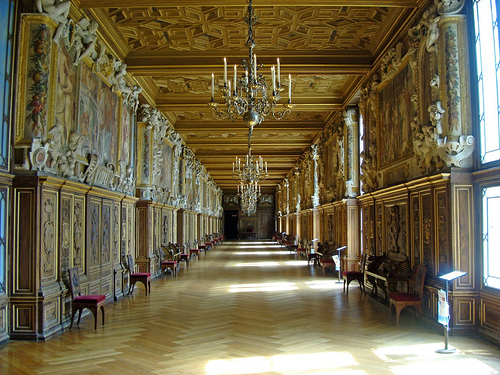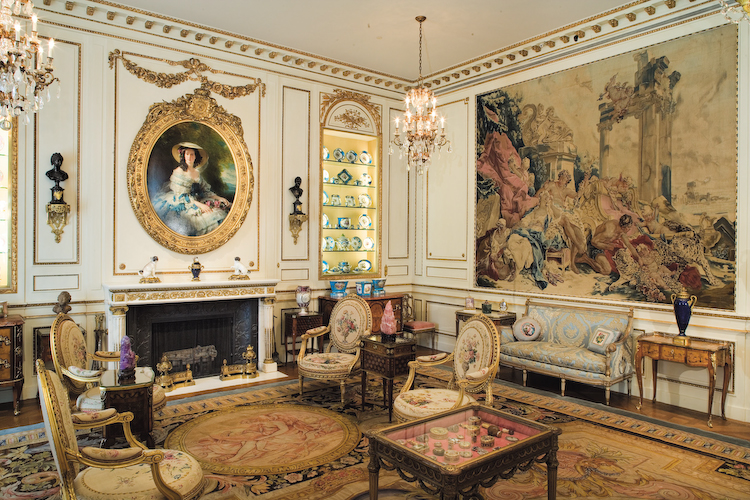The French Period was composed of many subdivisions including :
Early Renaissance (1484-1547)
Middle Renaissance (1547-1589)
Late Renaissance (1589-1643)
Baroque Style (1643-1700)
Regency Style (1700-1730)
Rococo Style (1730-1760)
Neoclassical Style (1760-1789)
Revolution and Directoire (1789-1804)
Empire (1804-1820)
Restoration Style (1830-1879)
Francois I was the most famous patron of the arts. He ruled during a transitional style and many Gothic forms with Italian Renaissance ornaments were incorporated. During this time the Chateau de Chambord, Chateau de Fontainebleau, and Chateau de Blois were built, as well as the renovations of the Louvre to Renaissance style. Because the main focus was on royalty, there was no need for new religious structure, but rather palaces and chateaux were built.
Francois I began the construction of Chateau Chambord which has 444 rooms, 84 staircases, 365 chimneys and is 14,300 acres of forest, lakes and grassland. This chateau was considered the largest and most majestic of all the chateaux. In addition, it was partly designed by Leonardo Da Vinci who contributed the famous double stair case. This structure was decorated in the Renaissance style and used the fleur-de-lis as its design motif.
The Chateau de Fontainebleau had large structures, formal gardens, lakes, fountains, and an elaborate exterior. The Galerie in the chateau set a fashion in decoration that was copied all throughout Europe. This structure features coffered ceilings, carved wall paneling, paintings, sculptures, and high relief stucco ornament.
The exteriors were becoming important and often the interiors did not reflect the exterior style all too well. Due to the weather, roofs usually had 2 slopes with dormer windows. Many of the roofs were steep and the structures also required chimneys.
Past
Present
Extra Credit: https://www.youtube.com/watch?v=7UtIrkrBorM






No comments:
Post a Comment